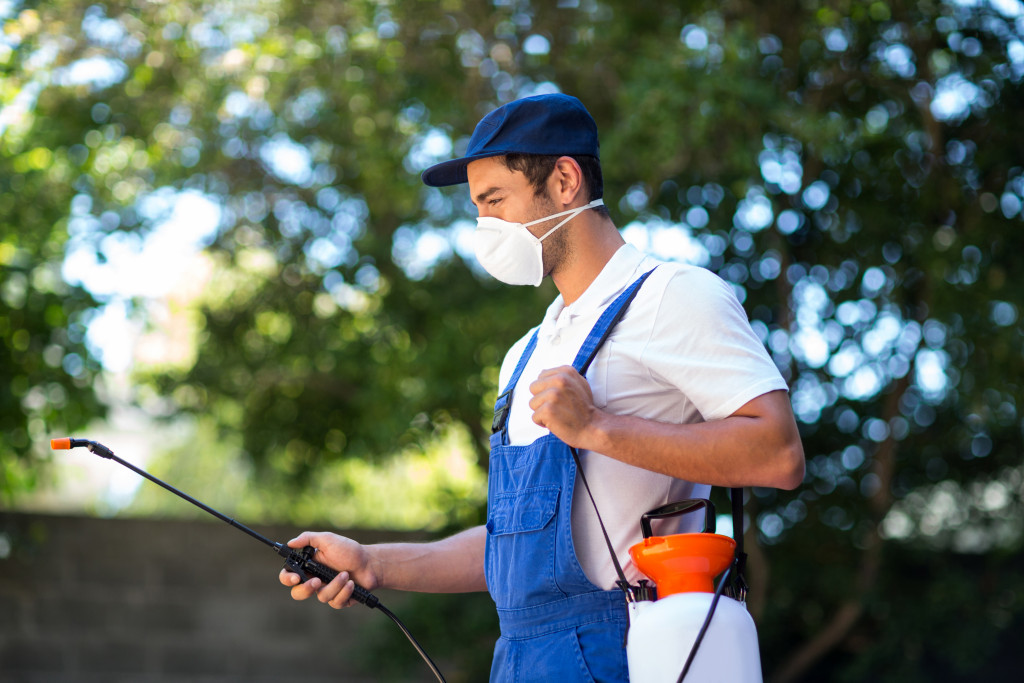One of the most groundbreaking trends in the pest control industry is the increasing use of technology tools. Accessible devices, changes in food safety regulations, critical customers, and lower thresholds are some of the few factors that push pest control companies to develop and explore innovations in pest management technologies.
The pest control industry gradually recognizes the importance of human and food safety than before, encouraging companies to create more comprehensive pest control programs. Their current goal is to utilize new technologies to reduce or eliminate the effects on the environment and increase capture rates than any other design. Some of the biggest innovations in pest control technology are the emergence of mosquito control research and the development of different modes of repellent products such as mosquito traps against Asian tiger mosquitoes.
Whether it’s about creating greener, safer, and more effective pest control products, the pest control industry finds ways to incorporate new technologies into its products and services. This is good news for farmers and homeowners whose properties are plagued with annoying pests. As we witness more advancements in pest management, here are some things you should know about the latest pest control technologies.
Non-toxic heat treatments
Although using heat in pest management is not a relatively new concept, tech developments introduced new heat applications with interesting benefits.
Even though pests survive in warm environments, a recent study reveals its adverse effects. Modern heat treatments for commercial usage use infrared rays to penetrate places where insects often lurk without ruining the physical structure on which the treatment is applied on. This method kills pests through dehydration and destruction of their physiological processes.
Heat treatments differ from toxic sprays since the latter has a limited surface coverage. It utilizes heat through infrared rays that kill pests from the inside. As a non-toxic treatment, this method prevents insects from being resilient on spray chemicals, which they can pass on to succeeding offspring using their genes.
Another great benefit of heat treatment is it doesn’t expose the person to chemical substances or irritants that can harm their skin or respiratory system. It also eliminates pests at any life stage, whether they are a full-grown adult or in the early larval stage.
Bio-rational materials
Due to the increasing awareness of eco-friendly practices, pest control companies are now using low-impact substances and materials. These include bio-rational products and materials with little to no effect on the environment.
One great example of a bio-rational substance is pheromones. Although pest control specialists have been using pheromone traps, an additional application of pheromones in insecticides is a widely new concept.
The University of California introduced a new development called the “pheromone-assisted technique” to optimize the efficiency of various insecticides, specifically the ones used for Argentine ants. The research is said to open new opportunities to create pheromone-enhanced products for different ant species.
Another example is the Insect Growth Regulator (IGR) that shares a few similarities with pheromone traps and uses synthetic replications from different insect hormones. It disrupts the insects’ life cycle and prevents them from reaching full maturity. A recent application is mixing IGRs to restrict insects from developing cuticles and exoskeleton and leaving them defenseless and vulnerable.

Solar-powered mole repellent
Moles are one of the primary culprits for damaged gardens and lawns. These ground-dwelling pests survive on insects and form elaborate underground tunnels that allow other species to consume plants and ruin the yard.
An effective method to keep moles out of the yard is the solar-powered repellent. This device drives critters away through an ultrasonic alarm inaudible to human ears. The tool relies on solar energy to replenish batteries and produces infrared light with motion sensors to identify mole movements at night.
Birth control for rodents
For many years, pest control specialists use birth control to reduce pesticides and harmful chemicals. Birth control is previously used for pest birds (e.g., pigeons) to manage their population. Today, the method is found effective on rodents as well.
Birth control sterilizes pests using radiation to prevent their reproduction rate and reduce their numbers. With rodents, pest control specialists include oral birth control on baits in places with active rodent activities.
Whether we like it or not, pests constantly adapt to the pest control measures humans use to eliminate them from their yards, farms, and homes. This is why technology and the right implementation of pest management techniques have never been important.
Today, pest management companies find better techniques to adopt new technologies and keep homeowners and farmers free of any pests. While there is no perfect method to get rid of these nasty pests, it’s important to know the best technologies to offer the most effective solution.
